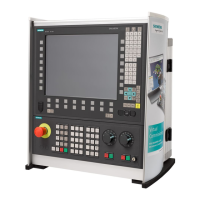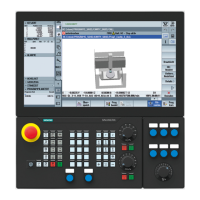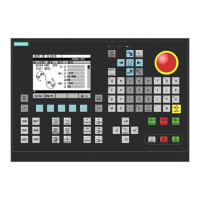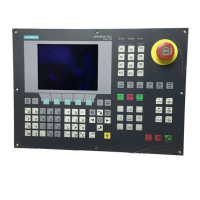Detailed Description
2.11 Subroutine call with M, T, and D functions
Mode Group, Channel, Program Operation, Reset Response (K1)
2-148 Function Manual, 08/2005 Edition, 6FC5397-0BP10-0BA0
2.11.3 Replacement of tool programming
2.11.3.1 T and D function replacement
Subroutine call via T function and D or DL function
Note
The subroutine call via T function is referred to hereinafter as T function replacement, and
the subroutine call via D or DL function is referred to hereinafter as D function replacement.
Call rules
If a T function is programmed in a part program block, a machine data can be used to
specify that the subroutine defined in MD10717 $MN_T_NO_FCT_CYCLE_NAME[n] is called
at the start or end of the block. Similarly, a replacement subroutine for address D or DL can
be defined with MD11717 $MN_D_NO_FCT_CYCLE_NAME[n].
With MD10719 $MN_D_NO_FCT_CYCLE_MODE Bit 1 and Bit 2, the call timing for the
T function replacement and D or DL function replacement can be set.
Assigning subroutines
The machine data
• MD10717 $MN_T_NO_FCT_CYCLE_NAME is used to assign a subroutine to the
T command
• MD11717 $MN_D_NO_FCT_CYCLE_NAME is used
to assign a subroutine to the D and DL command. The same subroutine should be
configured for the T and D replacement. The corresponding values are not output, the
T word and the D or DL word must be programmed again in the cycle.
Boundary condition
The subroutine configured with MD10716 $MN_M_NO_FCT_CYCLE_NAME[n] and with
MD10717: T_NO_FCT_CYCLE_NAME or MD11717 $MN_D_NO_FCT_CYCLE_NAME
cannot take effect simultaneously in a block (part program line), i.e. no more than one
D, T, or M function replacement (or generally just one subroutine call) may be executed per
block. Conflicts with other subroutine calls are signaled by alarm 14016.
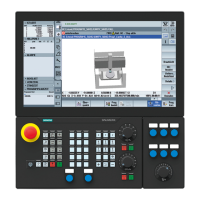
